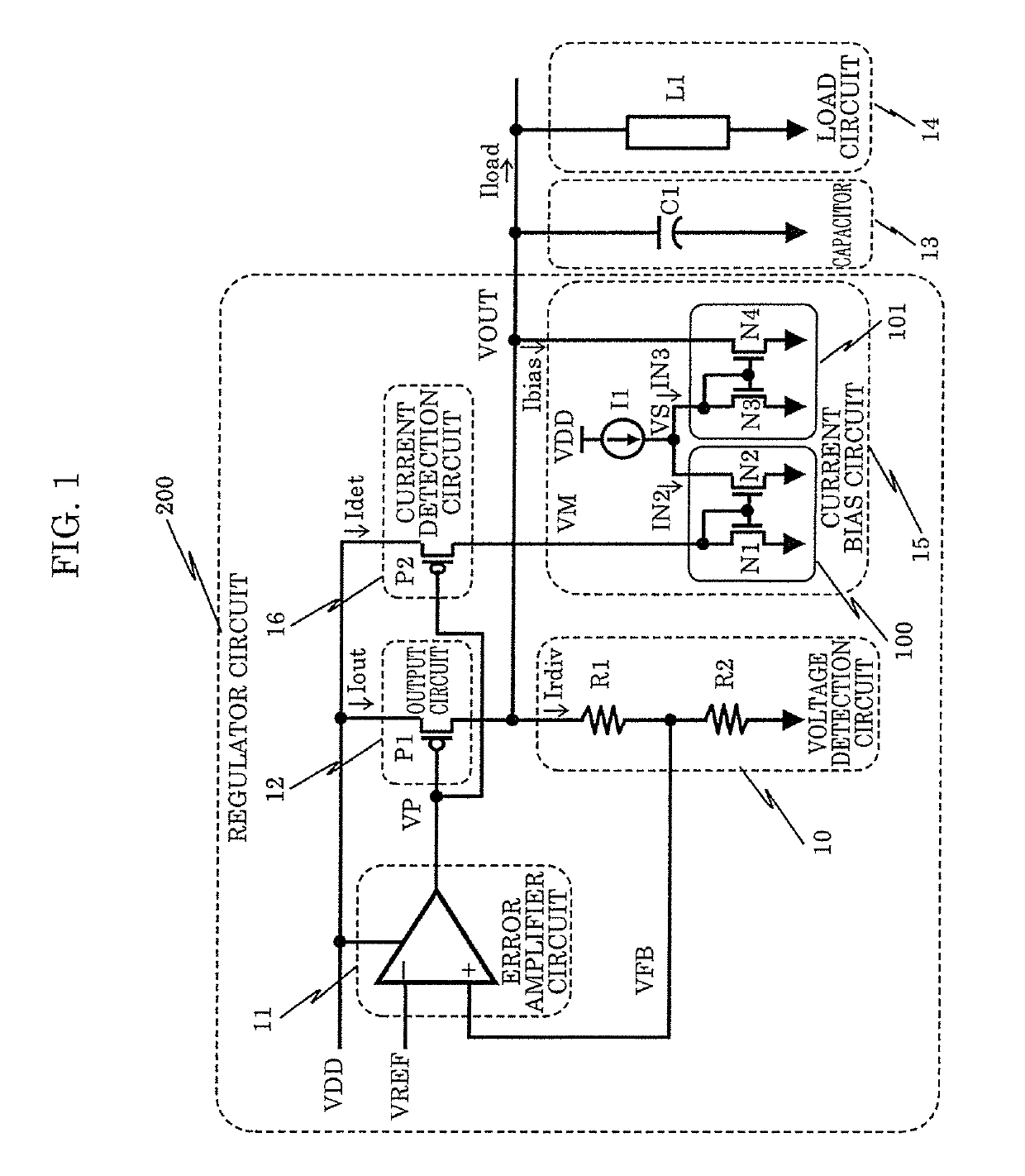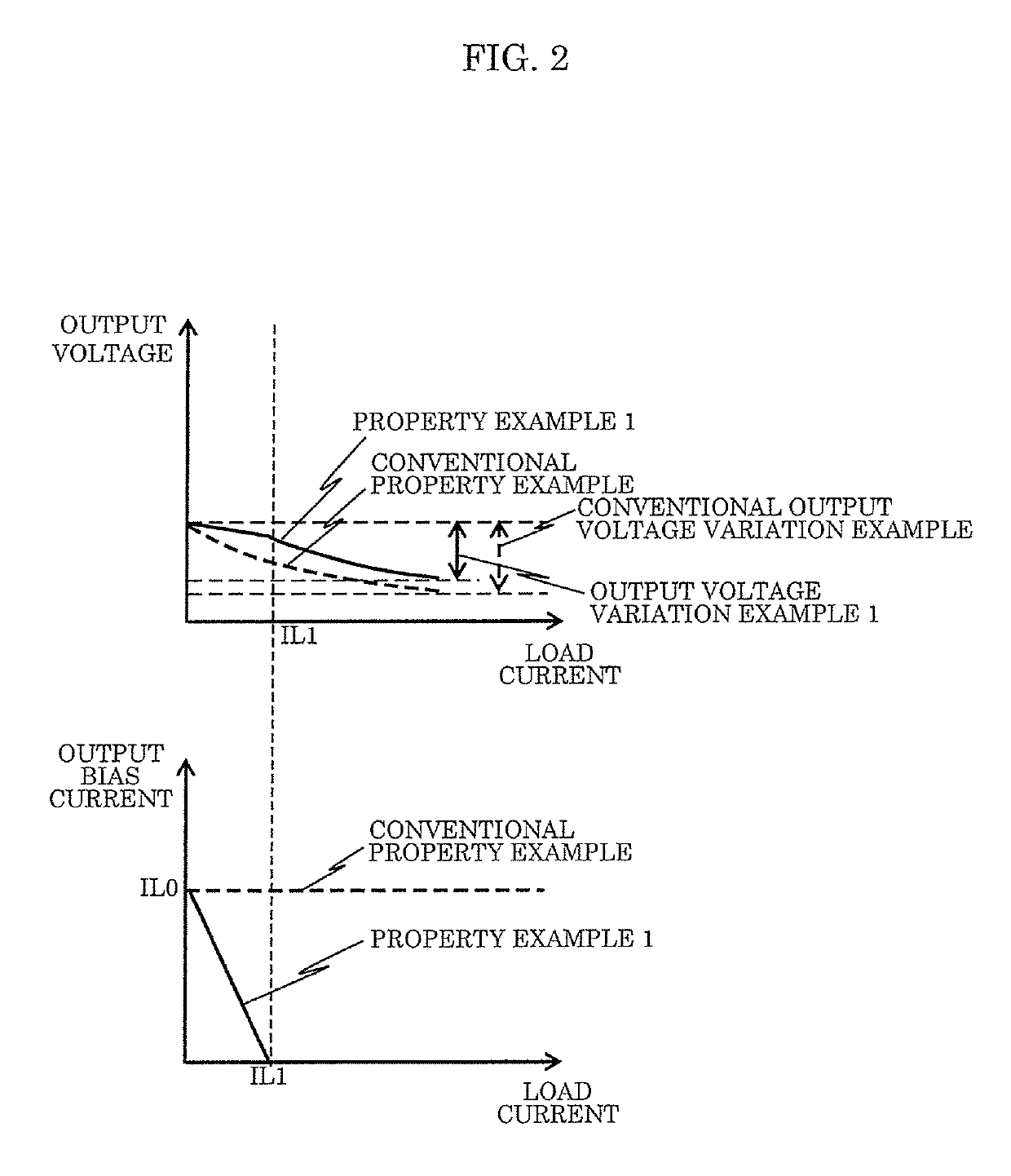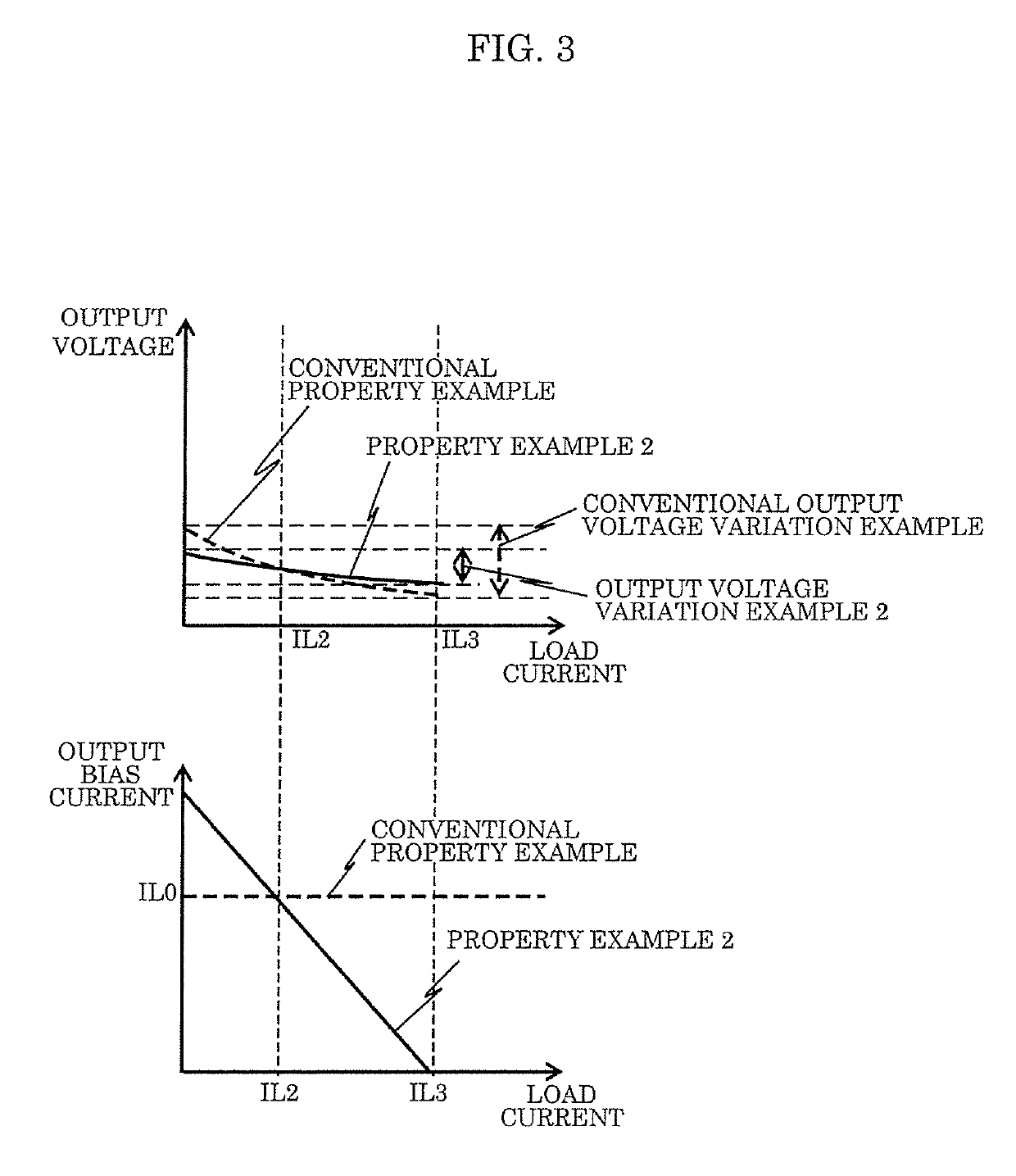Regulator circuit
a technology of regulator circuit and output voltage, applied in the direction of electric variable regulation, process and machine control, instruments, etc., can solve the problem of significant drop in output voltage, and achieve the effect of suppressing the drop in output voltag
- Summary
- Abstract
- Description
- Claims
- Application Information
AI Technical Summary
Benefits of technology
Problems solved by technology
Method used
Image
Examples
embodiment 1
[0037]FIG. 1 is a diagram showing a configuration example of regulator circuit 200 according to Embodiment 1, and peripheral circuits of the regular circuit.
[0038]Regulator circuit 200 shown in the diagram includes voltage detection circuit 10, error amplifier circuit 11, output circuit 12, current bias circuit 15, and current detection circuit 16. Also, in the diagram, capacitor 13 and load circuit 14 are shown as peripheral circuits. Capacitor 13 is composed of capacitor C1, and is provided in order to suppress AC variation of output node VOUT. Load circuit 14 is composed of load circuit L1, and load current Iload flows in a direction in which it flows from output node VOUT.
[0039]Regulator circuit 200 includes: voltage detection circuit 10 that outputs feedback voltage VFB according to output voltage VOUT of output node VOUT; error amplifier circuit 11 that outputs voltage VP that is a result of comparison between feedback voltage VFB of voltage detection circuit 10 and reference ...
embodiment 2
[0089]FIG. 4 is a diagram showing a configuration example of regulator circuit 200 according to Embodiment 2, and peripheral circuits of the regular circuit. In FIG. 4, structural elements that have the same functions as those of regulator circuit 200 according to Embodiment 1 described above are given the same reference numerals, and a detailed description thereof is omitted. Only differences will be described here.
[0090]Regulator circuit 200 shown in FIG. 4 has the same configuration as that of regulator circuit 200 shown in FIG. 1, except that current bias circuit 15 of regulator circuit 200 shown in FIG. 1 has been replaced by current bias circuit 15 shown in FIG. 4.
[0091]Current bias circuit 15 according to Embodiment 2 is composed of second current source I2 and third current mirror 102. Current bias circuit 15 includes an input terminal that is connected to node VM that is the output terminal of current detection circuit 16, and an output terminal that is connected to output ...
embodiment 3
[0115]FIG. 5 is a diagram showing a configuration example of regulator circuit 200 according to Embodiment 3, and peripheral circuits of the regular circuit. In FIG. 5, structural elements that have the same functions as those of regulator circuit 200 according to Embodiment 2 described above are given the same reference numerals, and a detailed description thereof is omitted. Only differences will be described here.
[0116]Regulator circuit 200 shown in FIG. 5 has the same configuration as that of regulator circuit 200 shown in FIG. 4, except that current bias circuit 15 of regulator circuit 200 shown in FIG. 4 has been replaced by current bias circuit 15 shown in FIG. 5.
[0117]Current bias circuit 15 according to Embodiment 3 is composed of second current source I2, third current mirror 102, and clamp circuit 17, and has a configuration in which clamp circuit 17 is further included in current bias circuit 15 according to Embodiment 2. Current bias circuit 15 includes an input termina...
PUM
 Login to View More
Login to View More Abstract
Description
Claims
Application Information
 Login to View More
Login to View More - R&D
- Intellectual Property
- Life Sciences
- Materials
- Tech Scout
- Unparalleled Data Quality
- Higher Quality Content
- 60% Fewer Hallucinations
Browse by: Latest US Patents, China's latest patents, Technical Efficacy Thesaurus, Application Domain, Technology Topic, Popular Technical Reports.
© 2025 PatSnap. All rights reserved.Legal|Privacy policy|Modern Slavery Act Transparency Statement|Sitemap|About US| Contact US: help@patsnap.com



